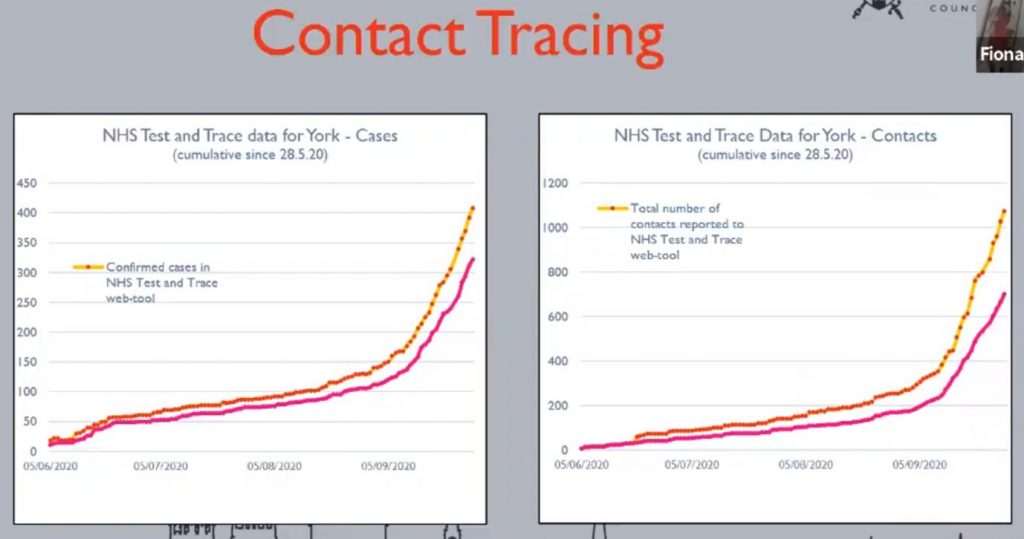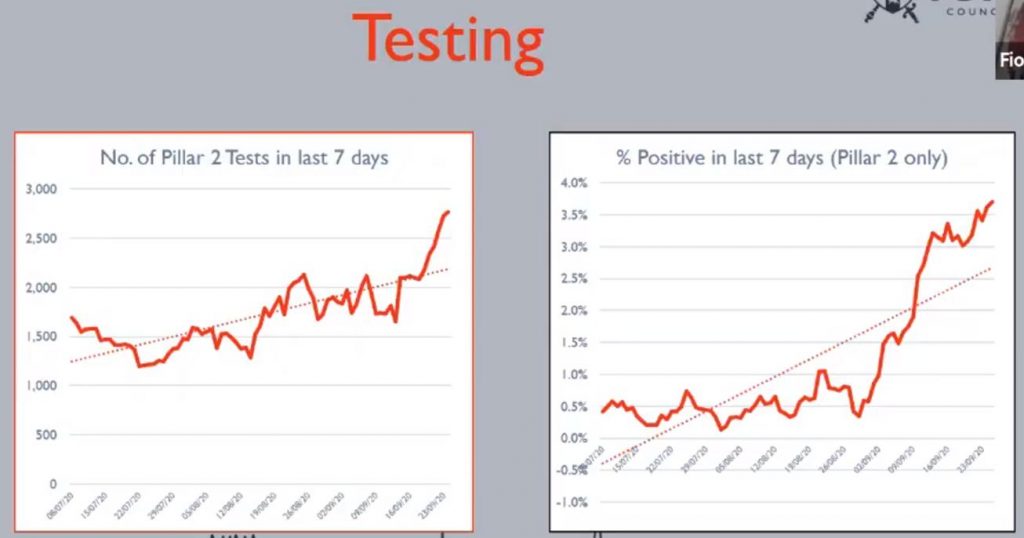Deaths and test results
It looks like York is heading for a new lockdown following the announcement today of 35 new positive test results. That brings the cumulative total number of cases to 1309.
The figures mean that we are now seeing over 50 cases per 100,000 head of population each week. This is the intervention level set by the government after which additional restrictions are implemented.
The most likely restrictions will be similar to those imposed in West Yorkshire. There, contact is banned between people from different households.
There have been no additional hospital deaths announced today
The worst affected neighbourhoods in York are Bishopthorpe/Copmanthorpe and Clifton Without/Skelton
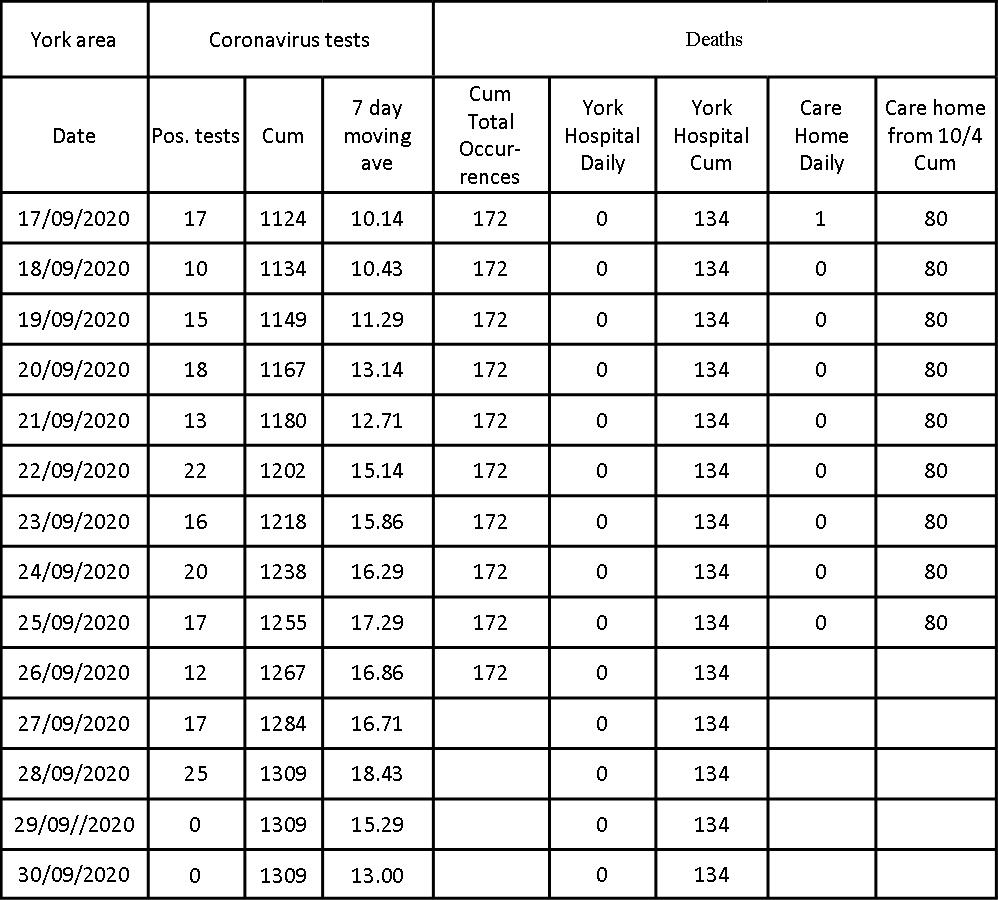
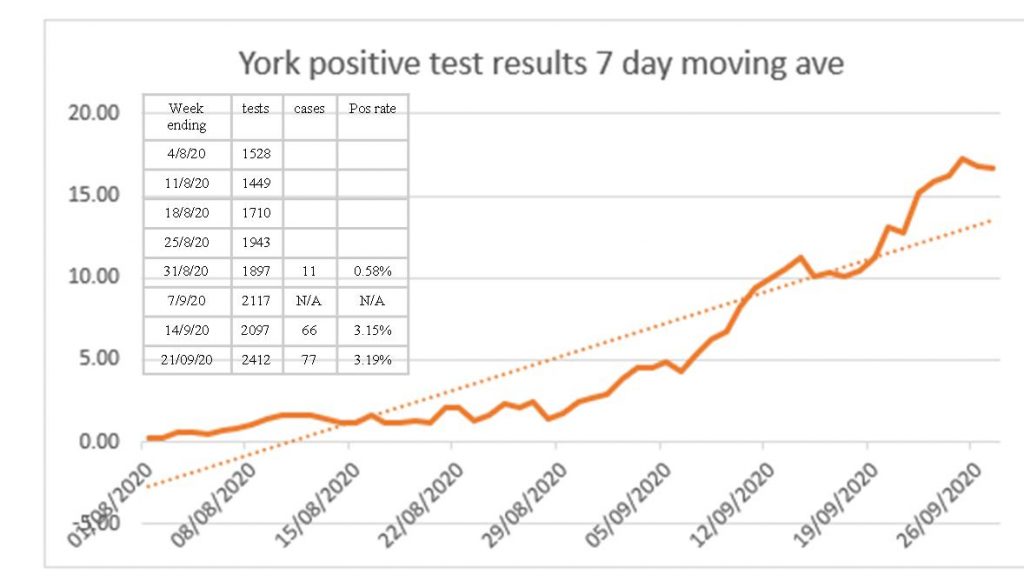
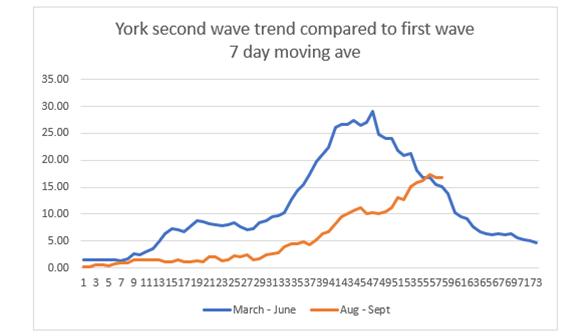
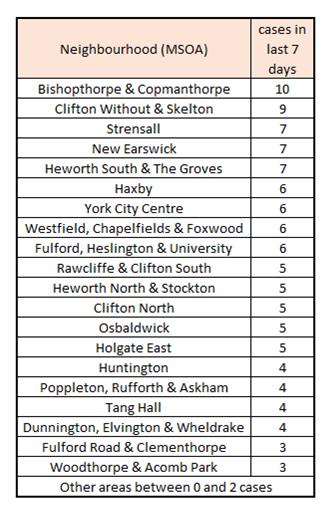
Lots of questions to be answered
UPDATE; The urgent control board meeting has taken place it can be viewed on line via the Council web site (click below)
One or two pieces of new information did emerge at the meeting. There are now 10 beds occupied at the York hospital by COVID patients. This is still many fewer than the numbers seen in May but is gradually increasing.
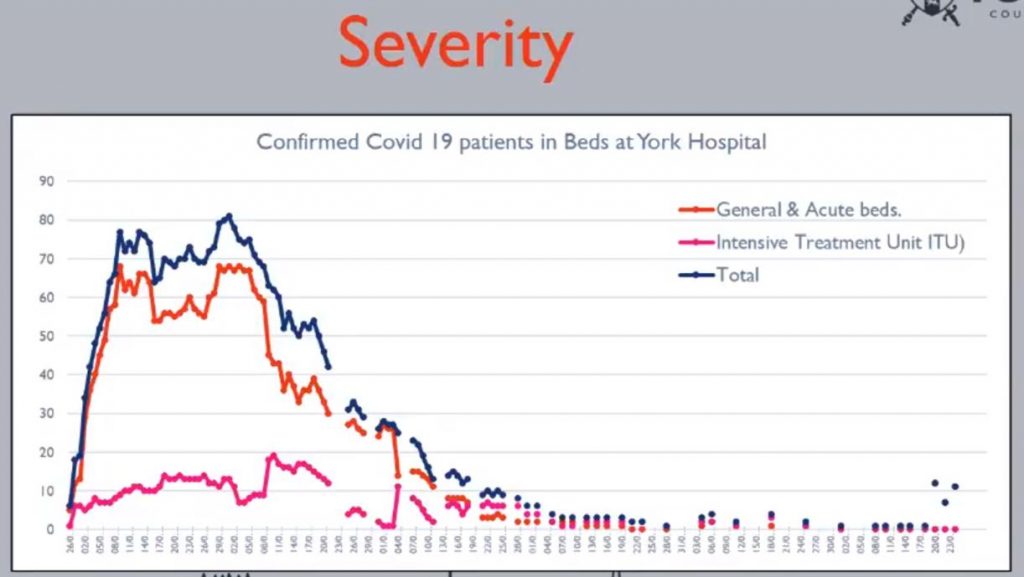
Although probably not a surprise to many, the demographics of the second wave suggest that it is under 30’s who are most affected
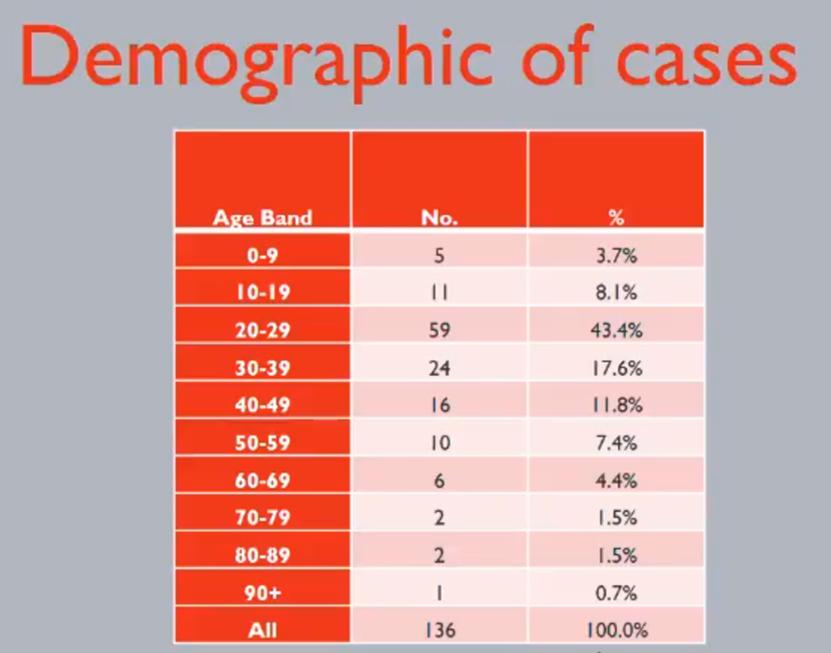
The meeting was told
- The last national seven day rate showed that as of 27 September York has 46 cases per 100,000 population, which on average is 14 new cases every day. There is usually a time lag in what is reported nationally and we will soon show a rate of 52. The national and regional averages are 49.7 and 70.3 respectively.
- The latest 7 day positivity rate in York (Pillar 2 only) was 3.61%. The national and regional averages are 3.8% and 4.6% respectively.
- In the two weeks up until 21 September, almost every area in York had positive COVID cases reported. No area has had over ten cases in the period of a week, which shows that transmission isn’t confined to particular parts of the city.
EARLIER The Councils COVID management board meets later today. Little update information has been issued in advance of the meeting (click)
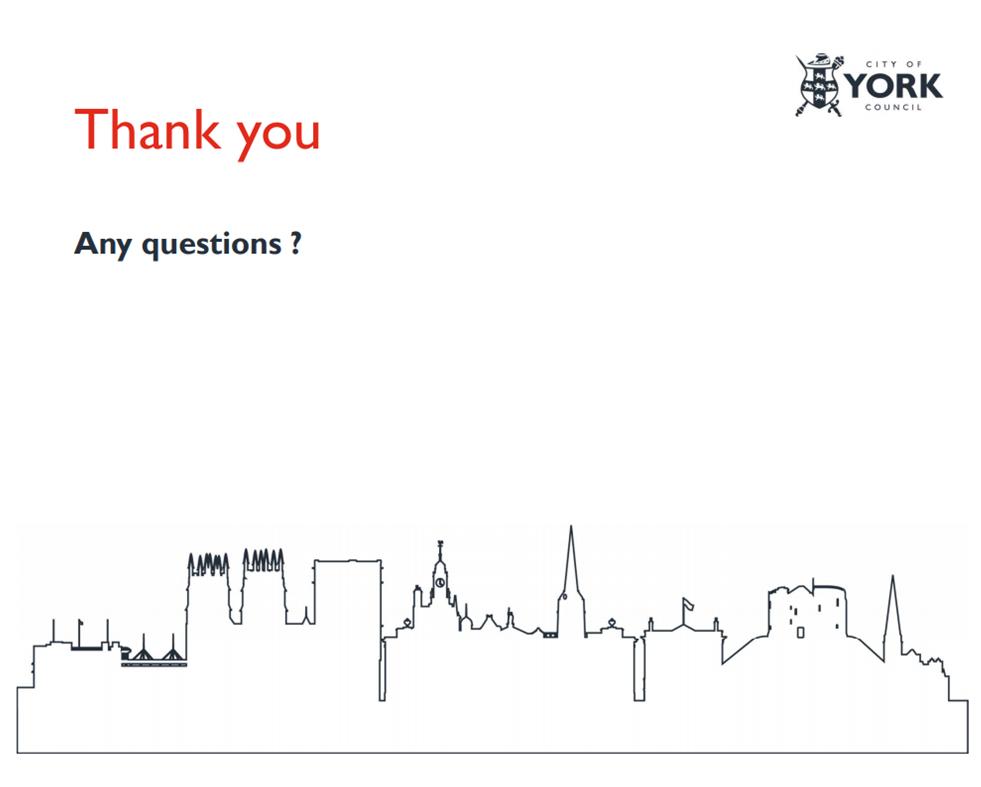
We know that the number of cases in the City is rising rapidly. Fatalities are also now occurring again. Such information is in the public domain courtesy only of central government web sites.
Analyses of the situation in York is anecdotal at the best
The Public Health Officer uses Facebook to say that most infections occur because of home visits by family and friends. Public contact is less of an issue apparently.
But no figures are offered to back up this assertion.
How many, when, where? All are key questions on the lips of residents.
We only know that there have been 2 recent COVID deaths in care homes. No further details have been provided
“Sources” at St Johns University say that over a dozen students have symptoms. York University says that case number are low. Both institutions say they have difficulty getting tests completed. So, do they really know the scale of their problems?
We now know that a drop in testing centre for York University students will open tomorrow in a segregated and managed area in the Wentworth Way car park. The facility will open from 8am to 8pm, seven days a week, on an appointment-only basis from tomorrow (Thursday). Tests can be booked using the NHS Covid-19 App, the NHS website or by telephoning 119.
The position for permanent York residents remains unclear.
We were promised another drop-in test centre. We do not know when, where or even if, it will open? Nor do we know what its capacity will be.
Where are the weekly test and trace numbers for York? What is the backlog in requests for tests. How quickly are results produced?
The Council apparently has access to the data but doesn’t publish it on its “Open Data” web site. Officials say they have the go ahead for a local test and trace process. That has been promised for 3 months now and seems to be no nearer to producing verifiable results at neighbourhood level.
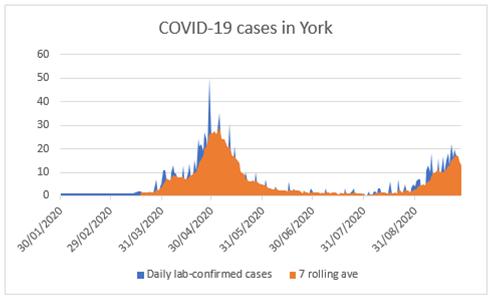
Then there is hospital management.
They are not listed on the Outbreak board agenda to be reporting to today’s meeting. Yet the ability of the hospital to deal with the second wave of cases is a key concern for residents. How many admissions? How many beds occupied? How many in ICU? How many discharges? What spare capacity is available?
Where is the independent challenge to the secrecy culture?
The executive member, with responsibility for Health issues, has a subterranean profile. There is no campaign for openness from that quarter. The last decision session on health and social care was held on 13th February.
The last Health and Adult Social Care Policy and Scrutiny Committee meeting was held on 18th February. That is the body which should challenge and question on health concerns.
A management meeting earlier this week promised that scrutiny committees would shortly start operating again. The health committee has a lot of ground to make up
The Health and Wellbeing Board last met on 30th July. It has no further meetings scheduled.
So, all York residents have available are the occasional anodyne “on line” Q & A session involving self styled “leaders”. Yesterday’s Facebook session was typical. It produced nothing new and was distracted by discussion of the so called “devolution” deals being offered to North Yorkshire.
It increasingly appears that the Councils aim is not to “inform” but to “direct”.
Anyone doubting that should look at the one presentation which has been released in advance of today’s meeting. The public relations plan (click) is all about what others should do. It fails to answer the obvious question.
What do residents want to know?
Monk Bar car park taxi shuttle service
The Council will continue the Monk Bar car park taxi shuttle service for the disabled until the new year. The decision was taken “behind closed doors” by a Council official.

While the basic principle of the service has been broadly welcomed, critics have blasted the large number (40) of spaces coned off for the service. This has put pressure on the rest of the car park. Anecdotally it appears that no more than seven spaces have been occupied by disabled drivers at any one time.
No analysis of the demand for space was published before the decision was made. Neither have any details of the number of passengers using the shuttle service been revealed.
The service is costing taxpayers £354 a day in subsidies.
Ambulances in bus lanes
In a less controversial decision, the Council has agreed that liveried ambulances may use bus lanes in future even if they not responding to an emergency call.

